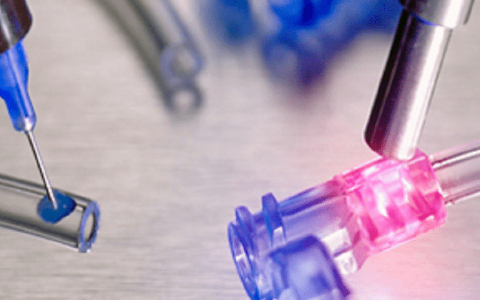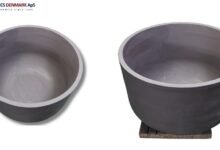Light-Cured vs. Self-Cured Adhesives: The Complete Guide

Orthodontic treatment success relies on effective bracket bonding, with adhesive choice playing a key role in minimizing failure rates. Orthodontists typically choose between light-cured and self-cured adhesives, each with unique benefits and limitations. This guide compares their performance and clinical use to help optimize bonding procedures for better patient outcomes and practice efficiency.
Understanding Light-Cured Adhesives
Light-cured adhesives represent the most widely used bonding system in contemporary orthodontics. These materials contain photoinitiators that activate when exposed to specific wavelengths of light, typically in the blue spectrum around 470 nanometers.
Composition and Mechanism
The typical light-cured orthodontic adhesive contains bis-GMA (bisphenol A-glycidyl methacrylate) or TEGDMA (triethylene glycol dimethacrylate) as the resin matrix. Camphorquinone serves as the primary photoinitiator, working alongside amine co-initiators to create free radicals when exposed to curing light.
Inorganic fillers, usually silica or glass particles, comprise 70-80% of the material by weight. These fillers enhance mechanical properties and reduce polymerization shrinkage while maintaining adequate flow characteristics during placement.
Advantages of Light-Cured Systems
Extended Working Time: The most significant advantage is unlimited working time until light activation. This allows precise bracket positioning and eliminates the pressure of racing against cure time.
Superior Bond Strength: Studies consistently show light-cured adhesives achieve higher bond strengths compared to self-cured alternatives, typically ranging from 8-12 MPa in shear testing.
Predictable Curing: Complete polymerization occurs within 20-40 seconds of light exposure, providing consistent results across different environmental conditions.
Easier Cleanup: Excess adhesive remains workable until cured, making flash removal straightforward during the bonding appointment.
Disadvantages and Limitations
Equipment Dependency: Requires functional curing lights with adequate intensity (minimum 400 mW/cm²). Light degradation or malfunction can compromise bond quality.
Technique Sensitivity: Proper light positioning and exposure time are critical. Inadequate curing leads to weak bonds and increased failure rates.
Limited Access: Posterior teeth may receive insufficient light exposure, particularly in patients with limited mouth opening.
Higher Initial Cost: Curing lights represent a significant equipment investment, though modern LED units have reduced long-term operating costs.
Self-Cured Adhesives: Chemical Activation
Self-cured or auto-cure adhesives polymerize through chemical reaction without requiring external light activation. These two-component systems mix to initiate the curing process immediately upon combination.
Composition and Activation
Self-cured systems typically use benzoyl peroxide as the initiator component and a tertiary amine as the activator. When mixed, these components create free radicals that propagate the polymerization reaction throughout the adhesive mass.
The resin chemistry often mirrors light-cured systems, utilizing similar bis-GMA or urethane dimethacrylate matrices with comparable filler loading.
Advantages of Chemical Curing
Equipment Independence: No curing light required, making these systems ideal for mobile practices or as emergency backup options.
Consistent Curing: Polymerization proceeds uniformly regardless of location, ensuring adequate cure in posterior regions with limited light access.
Lower Setup Costs: Eliminates the need for curing light investment and maintenance.
Reliability: Performance remains consistent even when other equipment fails, providing treatment continuity.
Disadvantages of Auto-Cure Systems
Limited Working Time: Once mixed, the adhesive begins curing immediately. Working time typically ranges from 60-90 seconds, creating pressure during bonding braces procedures.
Bond Strength Variability: Generally produces lower bond strengths than light-cured alternatives, with greater variation between samples.
Mixing Requirements: Two-component systems require proper proportioning and mixing, introducing potential for human error.
Waste Generation: Unused mixed adhesive cannot be saved, leading to material waste during shorter appointments.
Clinical Performance Comparison
Bond Strength Analysis
Research consistently demonstrates superior bond strength with light-cured adhesives. A systematic review of orthodontic adhesive studies found light-cured systems averaged 10.2 MPa in shear bond testing, compared to 7.8 MPa for self-cured alternatives.
However, both systems exceed the minimum 5.9-7.8 MPa range recommended for clinical orthodontic applications. The practical difference lies in the safety margin each system provides against bond failure.
Working Time Considerations
Light-cured adhesives offer unlimited working time until activation, allowing methodical bracket placement even in complex cases. This proves especially valuable when bonding multiple brackets simultaneously or working with anxious patients requiring frequent breaks.
Self-cured systems demand efficient workflow and experienced technique. The abbreviated working time suits experienced practitioners but can challenge newer orthodontists still developing their bonding rhythm.
Polymerization Shrinkage
Both systems experience volumetric shrinkage during curing, typically 2-4% for orthodontic adhesives. Light-cured materials often show slightly higher shrinkage values due to their higher degree of conversion.
However, the clinical significance remains minimal, as orthodontic adhesive layers are relatively thin compared to restorative applications where shrinkage stress becomes more problematic.
Biocompatibility Profile
Modern orthodontic adhesives demonstrate excellent biocompatibility when properly cured. Light-cured systems show slightly better biocompatibility due to more complete polymerization and reduced residual monomer content.
Self-cured adhesives may retain higher levels of unreacted components, particularly if mixing is inadequate or environmental conditions affect curing. Proper technique minimizes these concerns in clinical practice.
Clinical Decision-Making Factors
Patient-Specific Considerations
Age and Cooperation: Younger patients or those with behavioral challenges benefit from the extended working time of light-cured systems.
Oral Anatomy: Patients with limited mouth opening or challenging posterior access may require self-cured adhesives for adequate bonding.
Treatment Complexity: Full-mouth bonding appointments favor light-cured systems, while single-bracket replacements may suit either approach.
Practice Environment
Equipment Reliability: Practices with older or less reliable curing lights might maintain self-cured alternatives as backup options.
Staff Experience: Less experienced staff may achieve more consistent results with self-cured systems that eliminate light-positioning variables.
Case Volume: High-volume practices often prefer light-cured systems for their superior bond strength and reduced failure rates.
Step-by-Step Bonding Protocol
Surface Preparation:
- Clean teeth with pumice slurry
- Rinse and dry thoroughly
- Apply etch gel for 30 seconds
- Rinse and air dry until chalky white appearance
Adhesive Application:
- Light-cured: Apply thin primer coat, place adhesive on bracket base, position bracket, remove excess, cure for 20-40 seconds per bracket
- Self-cured: Mix components according to manufacturer ratios, apply to bracket base, position quickly, maintain pressure during initial cure (60-90 seconds)
Quality Assessment: Check for complete adhesive coverage around bracket base and verify adequate bond by gentle probing.
Read also: Why FireKing Is Trusted for Document and Data Protection
Recent Technological Advances
Improved Photoinitiator Systems
New photoinitiator combinations reduce oxygen inhibition and improve cure depth, addressing historical limitations of light-cured systems in areas with restricted access.
Self-Adhesive Systems
Recent developments include self-etching adhesives that combine conditioning and bonding steps, streamlining the bonding procedure for both light-cured and self-cured applications.
Antimicrobial Properties
Both adhesive types now incorporate antimicrobial agents to reduce bacterial colonization around brackets, potentially improving periodontal health during treatment.
Smart Materials
Research continues into adhesives with color-change indicators that signal complete cure or those with controlled-release fluoride to enhance remineralization.
Conclusion
Light-cured adhesives are preferred in orthodontics for their stronger bonds and extended working time, while self-cured adhesives are used in specific cases. Proper technique, training, quality curing lights, and equipment maintenance are essential for reliable treatment results.






